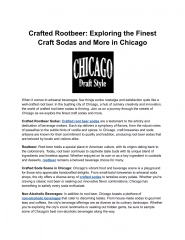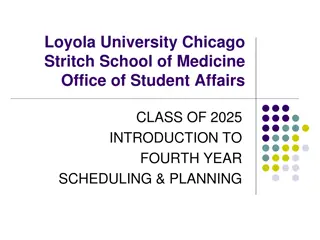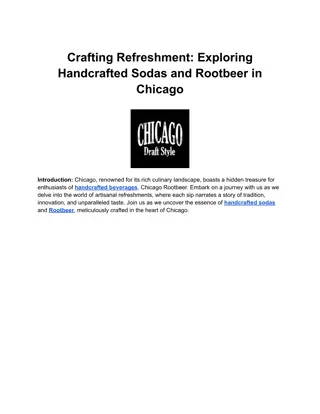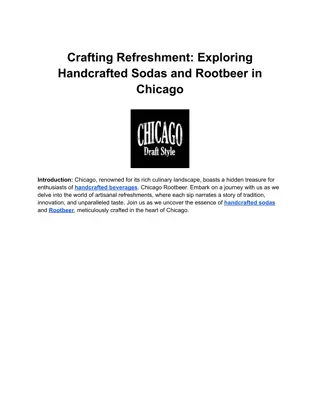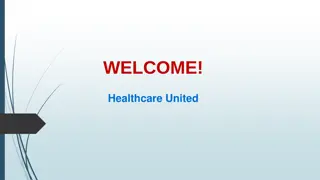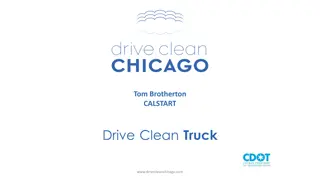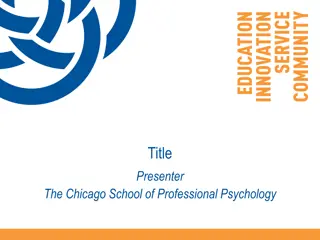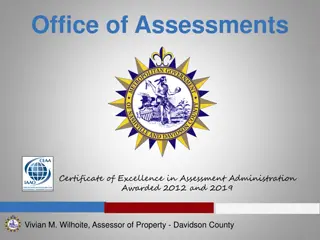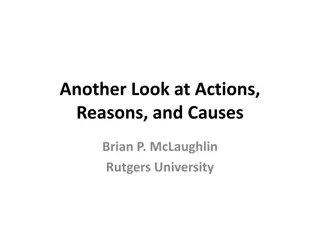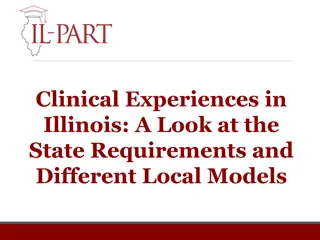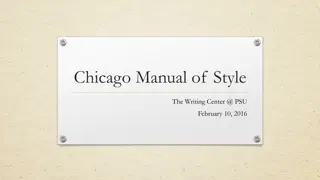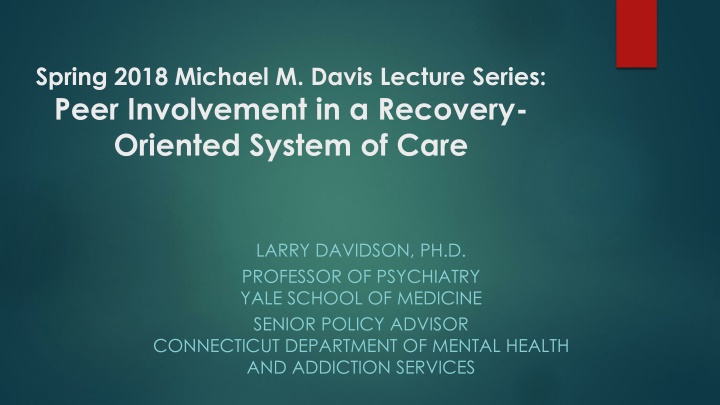
Recovery-Oriented Systems of Care in Mental Health
Learn about Recovery-Oriented Systems of Care (ROSC) in mental health, including their principles, benefits, and implementation strategies for involving peers. Discover how ROSC focuses on individual strengths, community support, and holistic approaches to achieving mental wellness and substance use recovery.
Download Presentation

Please find below an Image/Link to download the presentation.
The content on the website is provided AS IS for your information and personal use only. It may not be sold, licensed, or shared on other websites without obtaining consent from the author. If you encounter any issues during the download, it is possible that the publisher has removed the file from their server.
You are allowed to download the files provided on this website for personal or commercial use, subject to the condition that they are used lawfully. All files are the property of their respective owners.
The content on the website is provided AS IS for your information and personal use only. It may not be sold, licensed, or shared on other websites without obtaining consent from the author.
E N D
Presentation Transcript
Spring 2018 Michael M. Davis Lecture Series: Peer Involvement in a Recovery- Oriented System of Care LARRY DAVIDSON, PH.D. PROFESSOR OF PSYCHIATRY YALE SCHOOL OF MEDICINE SENIOR POLICY ADVISOR CONNECTICUT DEPARTMENT OF MENTAL HEALTH AND ADDICTION SERVICES
What I hope to cover: What is a Recovery-Oriented System of Care (ROSC)? What are recovery support services? Why involve peers in a ROSC? How to involve peers in a ROSC Direct care level Programmatic level System level Discussion
What is a Recovery-Oriented System of Care? The concept of a recovery-oriented system of care was first defined by the State of Connecticut in 2002 as follows: A recovery-oriented system of care identifies and builds on each individual s assets, strengths, and areas of health and competence to support the person in achieving a sense of mastery over mental illness and/or addiction while regaining his or her life and a meaningful, constructive sense of membership in the broader community. Commissioner s Policy #83, Connecticut Department of Mental Health and Addiction Services
Subsequent SAMHSA definition a coordinated network of community-based services and supports that is person-centered and builds on the strengths and resiliencies of individuals, families, and communities to achieve improved health, wellness, and quality of life for those with or at risk for mental health and substance use problems -- Substance Abuse and Mental Health Services Administration, 2010
Recovery ROSC is based on respect emerges from hope is person-driven occurs via many pathways is holistic is supported by peers and allies is supported through relationship and social networks is culturally-based and influenced is supported by addressing trauma involves individual, family, and community strengths and responsibility Strength-based and person-centered Individualized and comprehensive services across the lifespan Culturally responsive and responsive to personal belief systems Inclusive of family and other ally involvement Inclusive of the voices and experiences of recovering individuals and their families Partnership-consultant relationships Systems anchored in the community Continuity of care Integrated services System-wide education and training Commitment to peer recovery support services Adequately and flexibly financed Ongoing monitoring and outreach Research-based and outcomes-driven
In addition, a recovery-oriented system of care: encompasses a menu of individualized, person-centered, and strength-based services. This menu includes clinical services as well as recovery support services. provides individuals and families with more options with which to make informed decisions regarding their care. is designed to be accessible, welcoming, and easy to navigate. supports the premise that there are many pathways to recovery. involves people in recovery, their families and allies, and the broader community to continually improve access to and quality of services.
Slight digression: What are recovery support services? As a complement to treatment which aims to reduce or eliminate illness, symptoms, and relapse recovery support services aim to increase recovery capital. + Substance use, Symptoms, Impairments, Relapse Triggers Recovery Capital Treatment Recovery Supports
Recovery Capital is . . . the quantity and quality of both internal and external resources that a person can bring to bear on the initiation and maintenance of recovery (White, 2006) In contrast to people who achieve natural recovery (without care), many people with behavioral health conditions entering treatment have never had much recovery capital or have dramatically depleted such capital by the time they seek help.
Underlying Premise You need a little love in your life and some food in your stomach before you can hold still for some damn fool s lecture about how to behave Billie Holiday
Hope rather than Loss at times described as people with refractory addictions or as unresponsive to treatment (or castigated with such stigma-laden labels as frequent flyers or retreads ), such individuals may perhaps be better understood as being in need, not of more addiction-related losses in their lives (their capacities for such pain are often immeasurable), but of additional recovery capital. Put simply, the major obstacle to recovery may be more the absence of hope than the absence of pain. -- Bill White
Origins of Recovery Support Services Mental Health Consumer/Survivor/User Movement and Psychiatric Rehabilitation (e.g., supported housing and employment, self- help/mutual support) New Recovery Advocacy Movement in addiction Understanding processes of recovery as grounded in first-person, lived experiences and the value of peers (people who have been there )
Recovery Support Services include outreach, engagement, case management, recovery coaching or mentoring, and other strategies and interventions that assist people in gaining the skills and resources needed to initiate and maintain recovery and in establishing a social and physical environment supportive of recovery.
What Recovery Support Services do: enhance the person s recovery capital (e.g., by assisting people in addressing their basic needs, gaining employment, going back to school, forming sober social relationships, etc.) remove personal and environmental obstacles to recovery (e.g., through the provision of child care or transportation) enhance identification of and participation in the recovery community (e.g., through connecting people to treatment and to 12-step and other mutual support/recovery-oriented groups) 1) 2) 3)
Recovery Support Services offer: Assistance with addressing basic needs Transportation to and from clinical, rehabilitative, and other recovery-oriented, community-focused activities Sober and supported housing options such as transitional housing, liaison with landlords, etc. Post-treatment monitoring and support designed to assist people in establishing and/or maintaining engagement in services and activities Social support and community engagement services, such as recovery community centers designed to assist people in building positive community connections, discover positive personal interests, give back, and take on valued social roles Educational and vocational supports Legal services and advocacy
When provided by people in recovery, recovery support services also offer: Hope and positive role modeling Peer support Recovery education and mentoring Assistance in navigating social service and recovery service systems Assistance in asset mapping and connecting with community resources, welcoming community destinations, and informal community associations that support recovery
Substantive shift in perspective No longer viewed as further enabling of addiction, but rather as engaging people into and sustaining them in recovery. Or, as Keith Humphreys has said: It may not be okay to enable a person s using, but it should be okay to enable a person s recovery.
Example from Uganda http://www.youtube.com/watch?feature= player_embedded&v=d40zY0sEJLY
That all sounds nice, but especially in times of budget constriction, when we don t even have enough funding for core clinical services, aren t these luxuries we can t afford to provide?
Reduced Costs Overall in General Assistance $20,000,000 $16,000,000 $12,000,000 Prior to RSS With RSS $8,000,000 $4,000,000 $0 Acute care costs Non-acute care costs 55% reduction 6% reduction For a total of $10,932,902 cost savings ($2.5 million per year on average)
Reduced Costs from Mental Health Inpatient $8,000,000 $7,000,000 $6,000,000 $5,000,000 Prior to RSS With RSS $4,000,000 $3,000,000 $2,000,000 $1,000,000 $0 Acute Non-Acute %56 reduction 21% reduction For a total of $5,141,313 savings - $1,040,686 program = $3,825,664
Reduced Costs and Reinvestment from Inpatient & Residential Detox $500,000 $400,000 $300,000 Prior to RSS With RSS $200,000 $100,000 $0 Inpatient & Residential Detox 61% reduction $186,478 savings $145,297 increase Intensive Outpatient 75% increase
Cost Effectiveness It s not like you might think that you don t have the money to offer recovery support services, but rather that you don t have the money notto offer them. -- Keith Humphreys (again)
Increased Effectiveness Data from Access to Recovery funded by the Center for Substance Abuse Treatment 35% 30% 25% 20% Prior to RSS With RSS 15% 10% 5% 0% Alcohol use Binge drinking Drug use
Connection from Acute Care 70% 60% 50% 40% Prior to RSS With RSS 30% 20% 10% 0% Connect 37% increase No Care %49 reduction
Connection from Non-Acute 50% 40% 30% Prior to RSS With RSS 20% 10% 0% Connect 105% increase No Care 45% reduction
Problems with alcohol in last 30 days 4.00 3.00 2.00 1.00 0.00 Standard Care Skills Training Engage baseline 3 months -1.00 -2.00 -3.00 -4.00 -5.00 -6.00 Engage participants demonstrated a significantly greater reduction in problems with alcohol use in the past 30 days from baseline to 3 months than Standard Care (est.= 8.84, p<.001) and Skills Training (est.= 7.89, p<.001)
$ spent on Alcohol in last 30 days 80.00 60.00 40.00 Standard Care Skills Training Engage 20.00 0.00 baseline 3 months -20.00 -40.00 Engage participants had a significantly greater reduction in spending on alcohol than Standard Care (est.= 101.49, p =.04)
Act currently before Congress (2) RECOVERY COACH SERVICES. The term recovery coach services includes the following activities provided by a recovery coach in a hospital emergency department: (A) Connecting patients in hospital emergency departments who have been identified as having a substance use disorder with substance use disorder treatment and other recovery support services. (B) Serving as a role model for recovery from substance use disorders for hospital staff and such patients. (C) Providing hope and encouragement to such patients. (D) Providing education on overdose prevention to such patients. (E) Linking family members of such patients to recovery support resources. (F) Following up with such patients for a minimum of 14 days following discharge from the hospital emergency department to ensure continued connection to recovery support services.
Back to: Why involve peers in a ROSC? Nothing about us, without us! Vision of disability rights movement, adopted by persons in recovery as core principle of recovery movement.
Why else bother? Research suggests that stakeholder involvement increases the acceptability, recruitment, efficiency, clinical relevance, and dissemination and uptake of research as well as adherence (If I choose it, I m more likely to use it) It has become a central tenet, if not mandate, for government funding of medical and clinical research, as well as for person-centered care
For example Traditionally, patients have been involved in research as subjects, or even objects, but definitely not as colleagues. In 1995 the BMJ argued that patients should help to decide which research is conducted, help to plan the research and interpret the data, and hear the results before anybody else. Goodare & Lockwood, 1999 PCORI application
Why else? Rose Kushner and Betty Ford HIV advocacy Behavioral health conditions are health care conditions too, and people experiencing them remain people too.
In other words You would want to be involved if you or a loved one of yours was the patient. Persons with mental illnesses and substance use disorders want the same thing.
How to involve peers in a ROSC? A few examples to give you a taste Increasing level of involvement over time The more you do it, the more you want to keep doing it, earlier and more often
Example 1: Inpatient Recidivism How to reduce frequent readmissions? Started relapse prevention groups inpatient and invited people back after discharge to monitor their early warning signs. After 3 months, not a single person had attended a single group following discharge. We asked them what might be more helpful in preventing their readmissions, but we asked the wrong question. To the original question of what might help you stay out of the hospital, we received blank stares and questions about: Isn t that what the hospital is there for?
What the hospital offered and did not offer It s like a vacation, you take some time out, and, you know, in a place where there is privacy and there is care and there are lots of people to listen to you. The first time I was scared, the second time I had been here before and I knew what to expect, the third time it was like coming home again. Everyone was like greeting me at the door . . . The third time was the best. Treatment in the hospital was something like this where they ask you questions. It was like going to school [and] I passed . . . I passed with flying colors. Everybody loved me after I left that place. You get your levels, your levels are one to five, one, two, three, four, five. When you come in you re a one. To go, the goal is to leave as a five.
Participatory Program Development Findings Their lives in the community were lonely, empty, and impoverished They felt like they had no control, not only over their illnesses, but also over their lives as a whole Treatment was not responsive to their daily concerns Implications Focus on social connections to peers outside of hospitals by providing meals and social/recreational outings to promote connections and a better life in the community Developed and run by people with serious mental illnesses to instill hope and role model agency and efficacy in daily life
Findings Reduced days spent in hospital during 3-month period post- discharge from 5 days (control) to .4 days (ENGAGE) Increased time spent in outpatient treatment during same period from 10 hours (control) to 44 hours (ENGAGE) When compared to skills training and TAU, increased social functioning and engagement in self-care and decreased alcohol use.
Lesson learned In addition to being able to tell their own stories, people with serious mental illnesses can be collaborators in identifying and resolving issues in their treatment as well as in their own lives. And they can provide support to others.
Brief History of Peer Support Actually goes back as far as the field of psychiatry (i.e., Pinel in 1790s) Resurrected in current form in early 1990s, emerging from mutual support and consumer/ survivor movement Beginning to be considered an evidence-based practice with some unique characteristics
Peer support Especially effective at engaging the dis-engaged in relationships and care Reduces overall service use costs (e.g., fewer acute episodes, less days in hospital) Reduces alcohol and substance use Effective with respect to recovery-oriented outcomes (e.g., increases hope, empowerment, activation for self-care, well-being, decreased depression)
Example #2: Insight or acceptance Presumption of a lack of insight arose during a period in which clinicians did not share diagnostic information or educate people about mental illness or addiction. Clinicians nonetheless were frustrated by patients refusals to accept having an illness no one had ever told them they had Lack of insight now stipulated as a symptom of the disorder and used to justify coercive practices
Increased involvement Asked people with serious mental illnesses but also asked people with mental illnesses about what questions to ask, and had them conduct interviews, collaborate in data analysis and presentations, etc. the doctors don t fully understand, they really don t. A lot of people don t fully understand. Number one, they think you re crazy, you know, like a lot of people I talk to. And I m not a crazy person, but it s the point that we go through things that people can t even fully imagine, you know. We can tell you certain things, but it s almost like saying you ve never been to prison. I can tell you about prison. I can tell you everything. But until you experience being in prison, it s a whole different story. And that s how it is with this sickness thing that, you know, we re diagnosed with.
Reasons for denial It s hard to deal with, because people don t understand people that have schizophrenia. Some people say, well, we re crazy, you know. Sometimes you feel like you re not normal, because I was feeling like that for years, very depressed and humiliated and embarrassed about my illness. Well, I don t say it to them, tell them that s going on. I don t want them to look at me like I am nuts. I mean, you know, I m not nuts. I m embarrassed, I don t want people to tell there s something wrong with me, and I know there s something wrong with me that I m going through because they re not going through it, so obviously it s something wrong with me.
When I know Im acting that way, I just shut up and I just don t say anything because I don t want them to tell that anything s wrong with me. Most times I try not to even comment on it because if I say something they re just going to look at me like I m nuts anyways. I don t go there with people because it would be a waste of time and energy and then they ll just look at you like you re even more of a kook, so I just don t.
And yet, when interviewed by a peer But you re the only person I ve ever told. I don t really tell my doctor that, because they d probably really put me on more medication. So I ain t telling nobody nothing. You seem like a nice person. If people can really fully understand and feel what you re saying and know that you re really going to look into this stuff, and you re really going to try to make it work and everything, I believe they d be more open with you. And you ll learn, and not just you. Whoever else be that way, you all will learn a lot more what s going on inside of people. What s going on with these types of people? Do you really want to know? Do you really want to change that? Do you really want that information? And if people can feel that vibe from a person, they will open up so much more. And I believe you all will have so much material that you can really do something with it.
People are aware that we do not understand them and feel disregarded I get kind of down a little bit. It makes me tear. My eyes get a little watery sometimes, because like my wife said, I feel too different. I feel weird, you know. You feel like an outcast. You feel like an alien, like not an alien like a monster alien, but like a place you don t belong. People don t fully understand you. They don t. You have nobody you fully can really talk to about whatever the thing is you re going through, because they re so more into what they re doing instead of more of what you re going through.
and will decide when and how to talk about their experiences It s very frustrating. It s very frustrating, because you don t really know who to talk to about it. I try to talk to my doctor the psychiatrist that I see every two weeks. We sit down, and she is a nice person. But the more you talk to them, the more they want to go up on your medication. I mean, what happened to just talking to the person and trying to find out what it is first?
Most times I try not to even comment on it because if I say something they re just going to look at me like I m nuts anyways. I don t go there with people because it would be a waste of time and energy and then they ll just look at you like you re even more of a kook, so I just don t. I got to the point where I said I m not going to talk to anybody about it. Unless I know someone that can really understand, which I mean nobody could, so I just kept it to myself.
Example #3: User-led Research A day in the life project involved 8 service users collecting 10 oral narratives each, analyzing, and then presenting the data.

